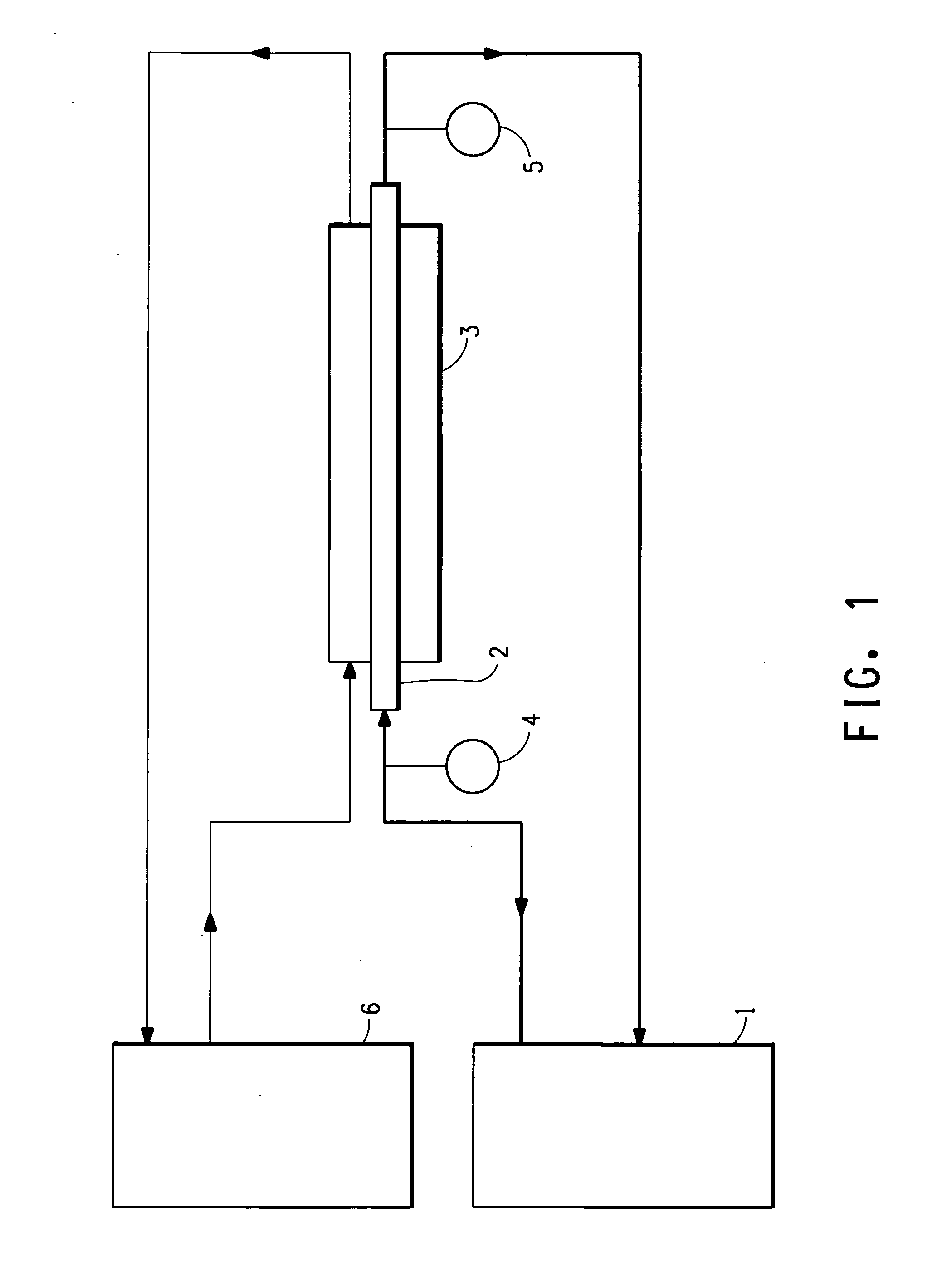Continuous process for producing poly(trimethylene terephthalate)
a technology of triethylene terephthalate and continuous process, which is applied in the direction of piezoelectric/electrostrictive transducers, instruments, transducer types, etc., can solve the problems of poor spraying operation, poor quality of the spraying condenser, and low flow rate of 1,3-propanediol recirculation, so as to reduce the amount of fouling and excellent quality
- Summary
- Abstract
- Description
- Claims
- Application Information
AI Technical Summary
Benefits of technology
Problems solved by technology
Method used
Image
Examples
example 1
[0072] This example demonstrates preparation of high quality poly(trimethylene terephthalate) in a continuous process where the condensed by-product 1,3-propanediol and other by-products are recycled back to the esterification reaction without purification.
[0073] A self-circulating esterifier designed as described in U.S. Pat. No. 3,927,982 was operated at about 245° C. and a process pressure of between 4 and 5 psig (129 to 136 kPa). Fresh 1,3-propanediol was continuously loaded into a 500 lb (227 kg) capacity feed tank from which it was fed to make paste. A paste containing fresh 1,3-propanediol and terephthalic acid at a mole ratio of about 1.5 (35.5 kg / h terephthalic acid and 24.4 kg / h 1,3-propanediol), and TYZOR® TPT catalyst at a level of 33 ppm Ti (relative to final polymer) was continually injected into the esterifier at a polymer production rate of 44.1 kg / h (97 lb / h). Water and 1,3-propanediol vapors were continually extracted into a distillation column where the water and...
examples 4-7
[0083] These examples were carried out with an apparatus utilizing a 5 / 32 inch inner diameter outlet tube 2 instead of the 0.25 inch outlet tube used in Examples 2 and 3. It was therefore expected that the effect of fouling on flow restriction should be greater in these examples than in the previous ones. The results are in Table 2.
TABLE 2Exp. 4Exp. 5Exp. 6Exp. 7Wt % Cyclic Dimer1.01.01.55.0Inlet Temp. (° C.)49.945.050.045.5Initial Outlet Temp. (° C.)47.042.046.041.5Test Duration (Hrs.)24242424Final Outlet Temp. (° C.)45.541.145.440.7Outlet Temp. Drop (° C.)1.50.90.60.8
[0084] As expected, the effect of the lower diameter tube in these examples was to somewhat increase the observed outlet temperature drop. However, comparison of the results of Examples 5, 6 and 7 to those of Example 4 indicate that when the circulation temperature was less than about 50° C., the amount of precipitation / fouling was less than it was at about 50° C. as evident from the temperature drops. Thus, in addi...
PUM
| Property | Measurement | Unit |
|---|---|---|
| temperature | aaaaa | aaaaa |
| temperature | aaaaa | aaaaa |
| pressure | aaaaa | aaaaa |
Abstract
Description
Claims
Application Information
 Login to View More
Login to View More - R&D
- Intellectual Property
- Life Sciences
- Materials
- Tech Scout
- Unparalleled Data Quality
- Higher Quality Content
- 60% Fewer Hallucinations
Browse by: Latest US Patents, China's latest patents, Technical Efficacy Thesaurus, Application Domain, Technology Topic, Popular Technical Reports.
© 2025 PatSnap. All rights reserved.Legal|Privacy policy|Modern Slavery Act Transparency Statement|Sitemap|About US| Contact US: help@patsnap.com

